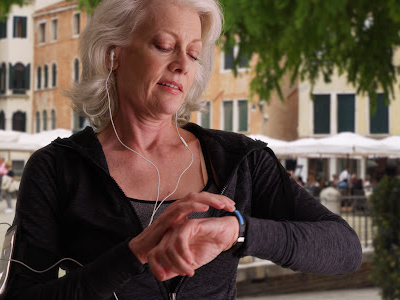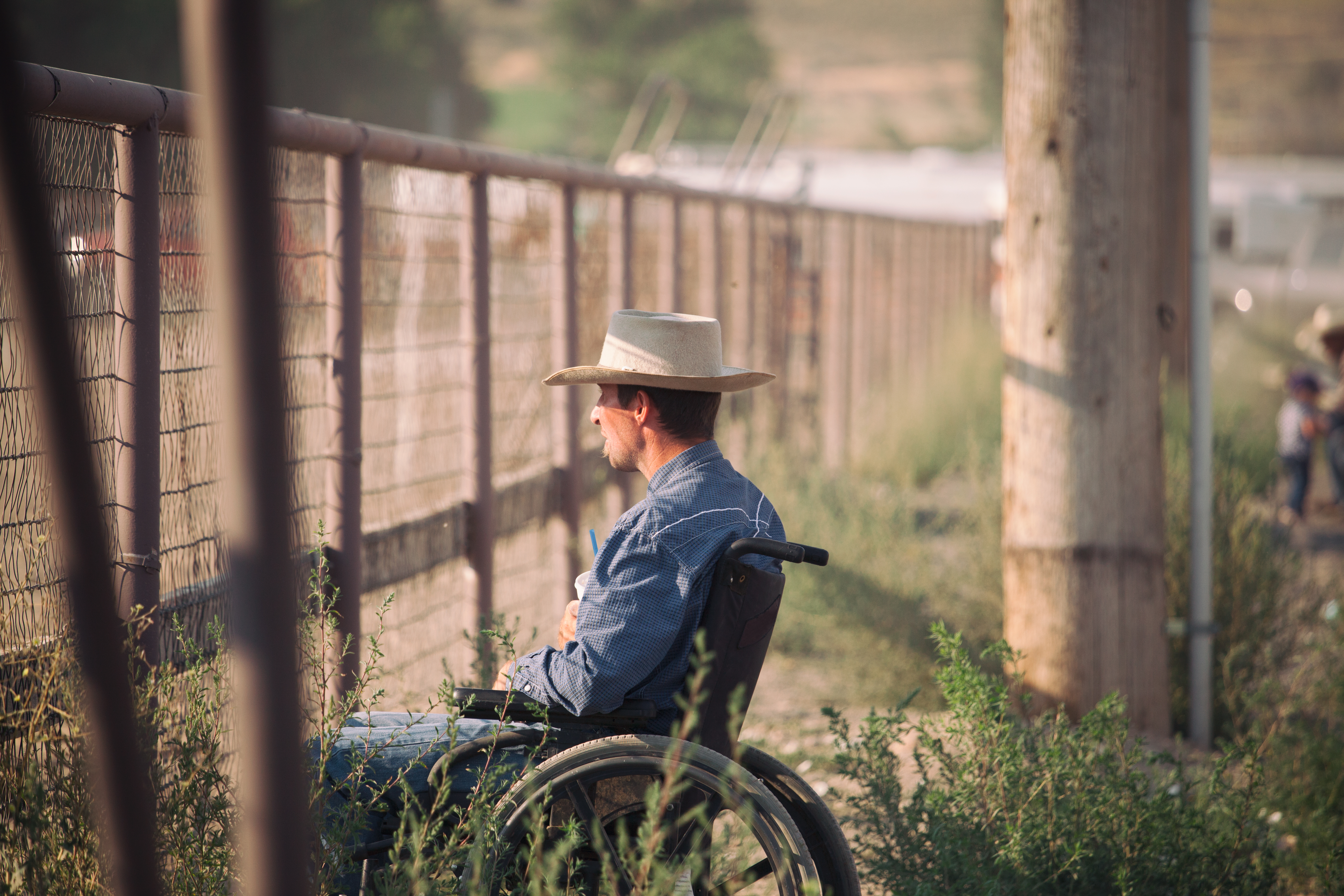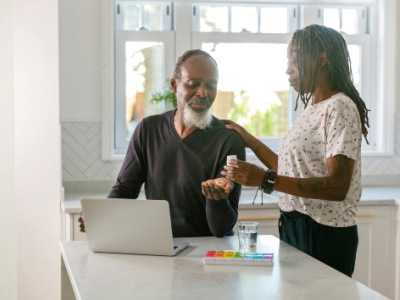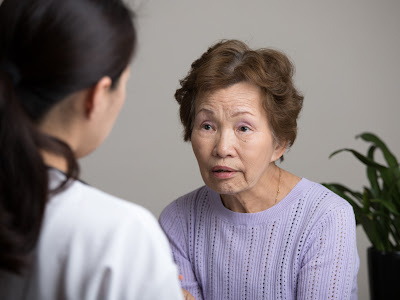When you use technology to find, create, and share information, you are using digital literacy.
Research published in the journal npj Digital Medicine calls digital literacy a “super” social determinant of health (SDOH), because it affects many other areas linked to health outcomes— things like access to good schools, jobs, safe neighborhoods, community support, and health care services.
By improving these SDOHs, we in turn improve the root causes of good and bad health. Digital literacy, for example, can help you apply for jobs online. It can also help you to find safe places to walk in your neighborhood.
Digital Health Literacy in Action
Here are some ways you might use digital health literacy in your daily life:
- Comparing options and enrolling in a health insurance plan on a government website
- Sending a private message to your healthcare provider on your patient portal or personal healthcare website
- Testing the video and sound for your online therapy appointment
- Using a wearable fitness tracker to count your steps and heart rate throughout the day
- Searching online for healthy recipes to prepare for a family member with diabetes
Barriers to Digital Health Literacy
Not everyone has the same opportunity to be “digitally health literate” and many of the barriers people face are outside of their direct control. Barriers to digital health literacy can impact people’s ability to use the health technology tools they need to take care of their health. For example, researchers found that almost 4 out of 10 older adults were not ready for telehealth visits during the COVID-19 pandemic.
It can be harder for people to use technology for health-related tasks when they:
- have lower health literacy in general.
- don’t have access to or experience using a tech device like a smartphone or a computer.
- don’t have access to high-speed internet.
- have a disability like not being able to hear or see well.
- don’t have people in their homes who could help them use technology.
- don’t have health technology apps or websites available in their preferred language.
An unfair distribution of resources such as access to high-speed internet can make people such as those with lower household incomes or those living in rural areas more likely to be affected by barriers to using health technology.
About the Digital Divide
The gap between those who do and do not have tech access and skills is called the “digital divide.” This gap can make existing inequities or unfair differences in health between groups even worse. When online health information and services are available and easy to use for everyone, no one is left behind.
Ways Digital Health Literacy Can Improve Your Health
- Breathe easier with trusted online health sources. Chronic obstructive pulmonary disease (COPD) is a lung disease that can make it harder to breathe. Patients with COPD who had higher digital health literacy were able to tell the difference between high and low-quality internet sources. This helped them to make better decisions about managing their COPD symptoms. Patients with higher digital health literacy said they had fewer problems with chest tightness, slept better, and had more energy.
- Stay protected from COVID-19 by searching smart. U.S. college students with higher digital health literacy thought it was easier to search for reliable information about COVID-19 online. These students were more likely to follow COVID-19 safety measures like wearing masks in July 2020. They were also more willing to get the COVID-19 vaccine.
- Take the pressure off with online refills. Researchers studied veterans with diabetes who were enrolled in an online patient portal. Patients who refilled their medicines online for more than 2 years had better blood pressure levels than those who didn’t.
Patient Perspective: Meet Natasha
Natasha is a 33-year-old woman from Philadelphia, PA, who lost the use of one hand after a stroke. Her occupational therapist taught her how to use the MyChart app on her phone while she was recovering in a rehabilitation hospital. After receiving this digital health literacy, she can successfully make appointments, look at test results, request prescriptions, and read and reply to messages from her doctors.
Making Online Health Tools Easier to Use
You can take steps to improve your own digital health literacy skills. However, it is even more important for hospitals and other healthcare organizations to make their online health tools easier to use.
Tips for Hospitals and Healthcare Organizations
- Ask patients what devices they own and how they usually access the internet.
- Have digital health navigators who can help patients get ready for telehealth visits.
- Using closed captioning for telehealth visits to help people with hearing challenges.
- Test how accessible your health website is to patients who have disabilities and ensure it is accessible on mobile devices.
- Work with local groups or libraries to develop digital literacy training programs.
- Make sure your patient portals meet peoples’ language and cultural preferences.
Many of the U.S. Department of Health and Human Services' Healthy People 2030 Goals are related to digital health literacy; some include increasing peoples’ use of technology to communicate with providers and their use of telehealth. See AHIMA Foundation's Research Agenda for more information.
Additional Information:
- eHealth Literacy Research Summary (Centers for Disease Control and Prevention) - More background on the topic of eHealth Literacy and tips for health and communication professionals
- Health Literacy Online (Office of Disease Prevention and Health Promotion) - Guide for designing health websites and tools for all users
- Digital Health Literacy Curriculum (National Library of Medicine and All of Us Research Program) - Free training to support digital health literacy skills in your community
- Digital Literacy Skills Assessments (Northstar Digital Literacy) - Tests to check your digital literacy skills & resources to improve them
Terms to Know
Health literacy is the ability to find, understand, and use information and services to make health decisions.
Digital health literacy (also known as eHealth literacy) brings digital literacy and health literacy together and focuses on the ability to find relevant and reliable health information from electronic sources to solve health problems. It also includes adding in your own health-related content and protecting your privacy online.
Social Determinants of Health (SDOH) are factors in the environment where people are born, live, learn, work, play, worship, and grow older that have a major impact on their health, well-being, and quality of life. Language and literacy skills, including health literacy and digital health literacy, are considered SDOH.









